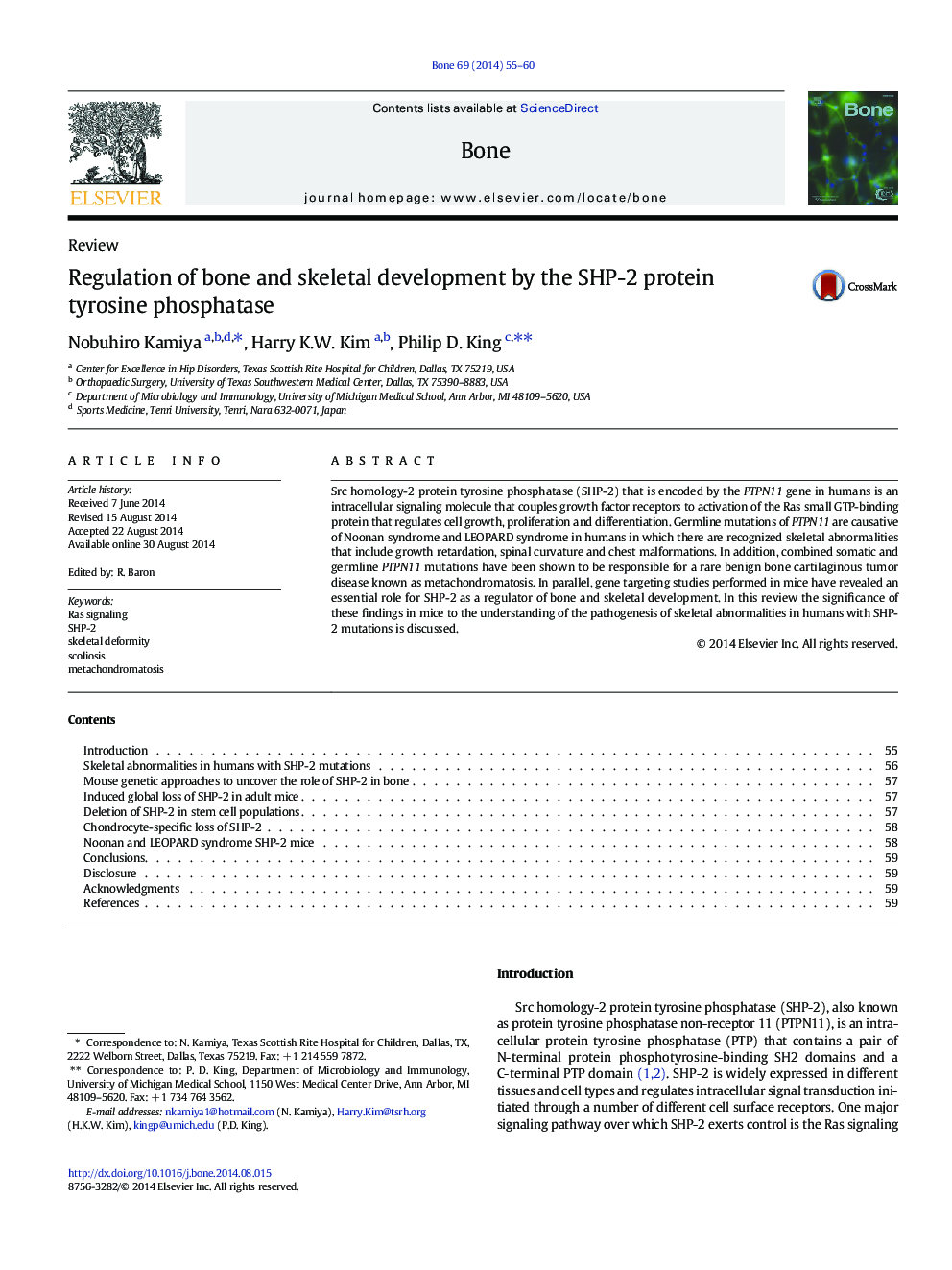| Article ID | Journal | Published Year | Pages | File Type |
|---|---|---|---|---|
| 5890136 | Bone | 2014 | 6 Pages |
â¢Skeletal abnormalities are common in NS, LS and MC that caused by SHP-2 mutationsâ¢SHP-2 is required for the differentiation of osteoclasts and osteoblastsâ¢SHP-2 inhibits the differentiation of hypertrophic chondrocytesâ¢Skeletal abnormalities in NS, LS and MC result from dysregulated Ras signalingâ¢Modulation of Ras signaling may ameliorate skeletal abnormalities in NS, LS and MC
Src homology-2 protein tyrosine phosphatase (SHP-2) that is encoded by the PTPN11 gene in humans is an intracellular signaling molecule that couples growth factor receptors to activation of the Ras small GTP-binding protein that regulates cell growth, proliferation and differentiation. Germline mutations of PTPN11 are causative of Noonan syndrome and LEOPARD syndrome in humans in which there are recognized skeletal abnormalities that include growth retardation, spinal curvature and chest malformations. In addition, combined somatic and germline PTPN11 mutations have been shown to be responsible for a rare benign bone cartilaginous tumor disease known as metachondromatosis. In parallel, gene targeting studies performed in mice have revealed an essential role for SHP-2 as a regulator of bone and skeletal development. In this review the significance of these findings in mice to the understanding of the pathogenesis of skeletal abnormalities in humans with SHP-2 mutations is discussed.
